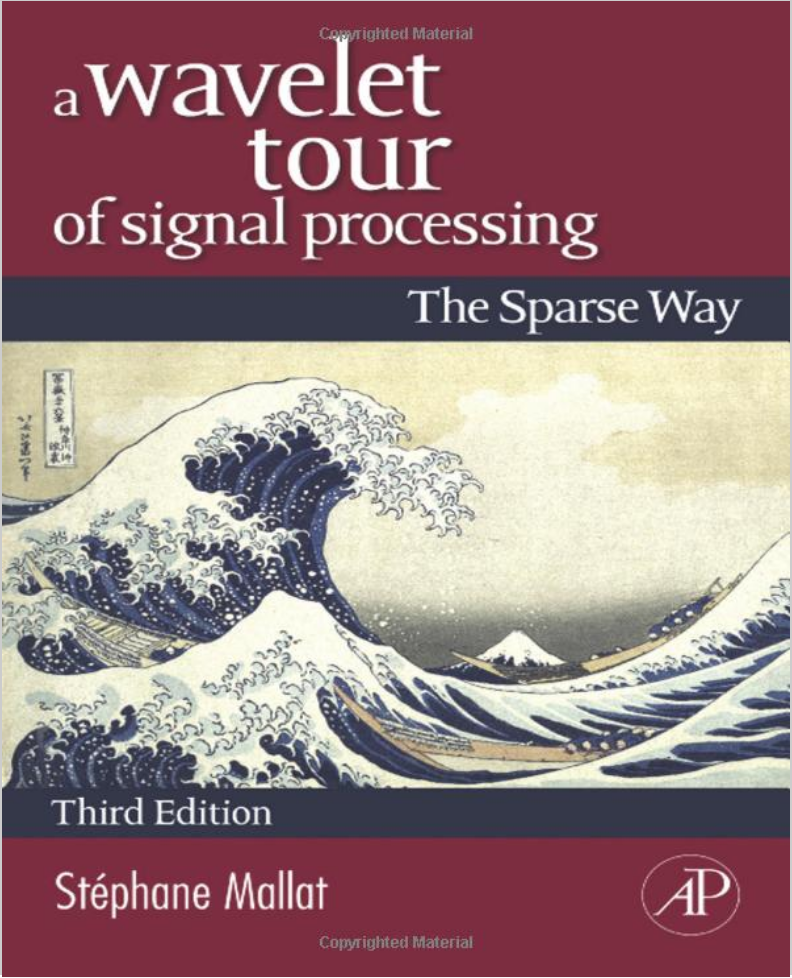NEW! (2009) A Wavelet Tour of Signal Processing, Third Edition: The Sparse Way |
 |
|
NEW! (2009)Conceptual Wavelets by L. Fugal. From the author: "This book uses very little math, yet provides an in-depth understanding of the concepts and real-world applications of these powerful tools." |

|
|
NEW! (2007) The Numbers Behind NUMB3RS: Solving Crime with Mathematics |
 |
|
NEW!Appeared in September 2006: M. Weeks's Digital Signal Processing Using MATLAB and Wavelets. |
 |
|
Somewhat NEW! yet intemporal Appeared in July 2006: Fundamental Papers in Wavelet Theory |
 |
|
The classics |
||
|
Stephane Mallat's book A Wavelet Tour of Signal Processing is a must for anybody interested in learning about wavelets. It provides a clear and solid theoretical foundation directed towards applications. Its unusual breadth makes it interesting to engineers, physicists and mathematicians alike. The subject of wavelets crystallized in the early 90's so this book (published in 1999) will stay a reference for quite a while. Mallat is one of the main contributors to the theory of wavelets and multiresolution analysis. This book is used as the main reference for the class "Wavelets and modern signal processing" at Caltech. My favorite chapters contain material on: Fourier transforms and series, sampling and aliasing, Time-frequency transforms, Frames, Orthonormal bases of wavelets, multiresolution analysis, Wavelet packets, Approximation theory of wavelet thresholding, Statistical estimation with wavelets, and Coding theory. |

|
|
| Ingrid Daubechies' Ten Lectures on Wavelets is one of the best-selling math books of the 90's. It is truly a marvel of scientific exposition. Wavelets are introduced from a more mathematical prospective than in Mallat's book, so it might not be a good pick for the non-mathematically-inclined beginner. The book beautifully covers in details: Wavelets with continuous parameters (CWT), wavelets with discrete parameters (DWT), multiresolution analysis, Gabor and wavelet frames, and compactly-supported wavelets (which bear Daubechies' name). |

|
|
| The World According to Wavelets: The Story of a Mathematical Technique in the Making, by science writer Barbara Burke Hubbard. This is a very pleasant account of the history of wavelets, mostly from the eighties and nineties, and is full of anecdotes and quotations from the leading researchers. It also contains interesting bits of popular intuition on the why and how of wavelets, far from the usual technical books (although the author tries her hands at explaining and even proving some facts about Fourier transform in the appendix, like the uncertainty principle). This book reads very much like a novel. Perfect to motivate students :) |

|
|
|
All the rest: |